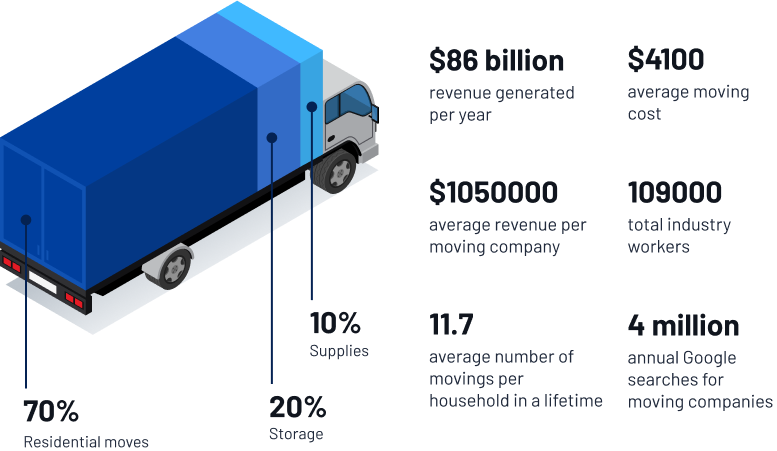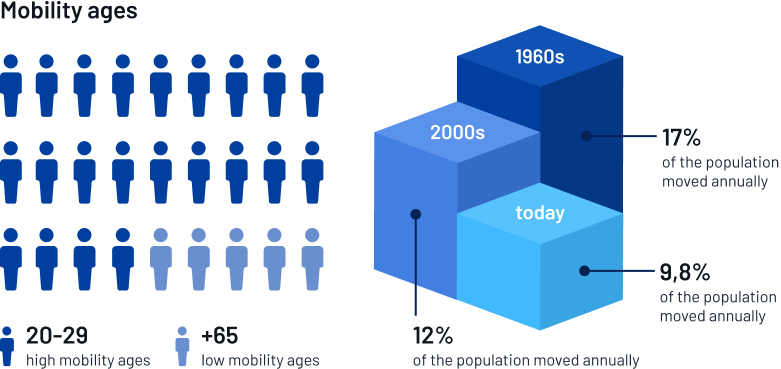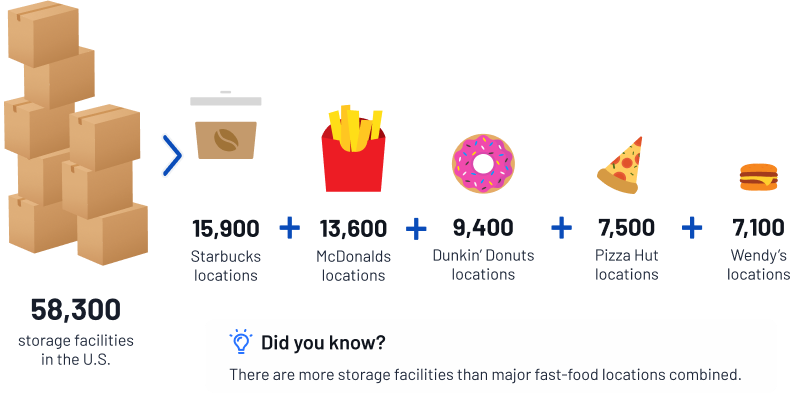- Home
- Cost Guide
- Moving Resources
- Our Services
- FAQs
- About Us
- I'm a mover
- Careers
- Others
Call us
Click to copy number
Moving industry overview
With the moving industry generating $86 billion annually, residential moves lead the way, followed by storage and supplies. The average move costs $4,100, with 109,000 workers supporting this essential sector. Americans move an average of 11.7 times in their lifetime, while searches for moving companies hit 4 million per year. Explore the numbers that drive this dynamic industry.

Industry Regulations
Understanding moving industry regulations helps you make informed decisions and avoid unexpected issues. From licensing requirements to written estimates and insurance coverage, these rules ensure your move is safe, transparent, and protected.
1. Licensed movers only Ensure your mover is registered with the FMCSA or the appropriate state authority. This protects you from unlicensed operators and guarantees your move meets legal and safety standards.
2. Written estimates required Get a clear, written estimate detailing all costs and services before your move. It’s your best defense against hidden fees and unexpected surprises.
3. Insurance and protection Professional movers carry insurance to cover loss or damage to your belongings. Verify their coverage and explore extra protection for valuable or fragile items.
4. Ready to move! With licensed movers, transparent estimates, and proper insurance, your move is set for success. Let the journey begin!
Seasonality and moving habits
Most moves happen during the summer months, with Fridays being the busiest day of the week. Visualize the trends with seasonal icons and see how the average move stacks up—featuring 60 boxes and loads reaching up to 6,500 pounds.

Mobility trends and demographics
Mobility in the U.S. has dropped by 50% since the 1960s, with only 8.4% of Americans moving each year. Young adults aged 20–29 are the most mobile, accounting for 40% of moves, while older adults aged 65+ move the least at just 10%. Discover how trends in age and lifestyle influence when—and why—people move.

How big is the moving industry
Moving and storage often go together, providing seamless solutions for transitions big and small. With over 58,000 storage facilities across the U.S., the storage industry plays a vital role in helping you manage your belongings during a move—whether it’s for a few weeks or a long-term solution.

We’re here to help you find the moving company that’s perfect for your needs, with the right support from the start.

0 comments